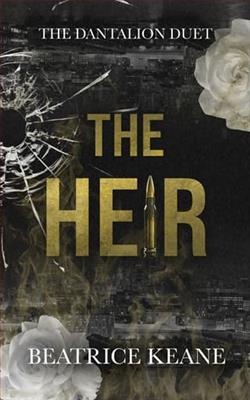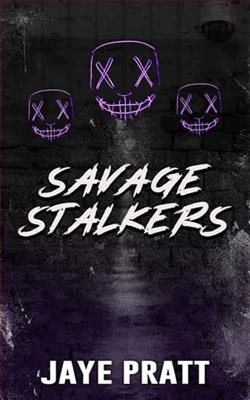Page 29 of Fade Out
I walkedout of Owen’s building not quite sure what I wanted to do next. It was after lunchtime, but I’d had my breakfast late so I didn’t need to eat. I would have gone over to the French Bakery anyway, but I knew Brian wasn’t there. And neither was Ross. I still knew a few people there but not well. There was something terrible about that. I hated that things changed. It always felt like a dirty trick.
For shits and giggles, I went down to the main library to look up a few people. Thirteen to be exact. I wanted to know more about the board members listed at the end of the prospectus for 618 North Wells. It was probably a dead end. A waste of time I didn’t have. But I went anyway.
At the library, the first thing I did was look up everything I could on the building itself. I found short articles announcing that it was going to be built and describing it as a 55-story condominium with premium amenities. There would be retail space on the first two floors, another two floors of common area for the condo, including office space for a management company, a pool, a meeting room, a bike room and storage lockers. After that, for the next fifty floors the units themselves would range from studios to three bedrooms.
The only thing unusual to me at all about those first articles were that they went back to 1981. It seemed like a long time, but then maybe that wasn’t unusual for a 55-story building. It wasn’t really my area.
I also found articles about the limited partnership itself (later in 1981), the fact that the zoning board had approved the building design (1982), and one article touting the fact that the architect had won an award for his design (1983). Several names came up over and over: Richard Crisp, Anthony Papalopolus and Arturo Luna. They appeared to be the main movers and shakers behind the building, which would also make them the primary con artists.
I looked them all up. I didn’t find much beyond their involvement with 618 North Wells. Except for Arturo Luna. I found an article detailing his suspicious death at the end of 1984. He’d been shot in the back of the head in his Highland Park garage. I also found an article on Gunner Lindquist, 56, of Niles, also shot in the back of the head right before he was dumped in the Chicago River early in 1983. Maybe there was a connection there.
Lindquist died first, then Luna. There was more than a year and a half between their deaths. Was it possible that Rita had something to do with Luna’s death? That would certainly have been revenge served cold. It was also possible, though, that Luna was killed by whoever killed Rita’s father—since the deaths were similar. If so, was there anything about Luna’s death that would have led Rita to her father’s killer? And if she knew her father’s killer, had she taken revenge yet? Or was she still planning it?
After I printed out those articles, I went down to the wooden phone booths on the first floor of the library. I had nine quarters. My plan was to call as many of the thirteen board members as I could. Using the telephone book that hung on a chain under the black payphone, I looked up the name that had come up most often in connection with the building: Richard Crisp.
There were five Richard Crisps. Two were on the south side in neighborhoods it was very unlikely the Richard Crisp I was looking for lived in. That left three. I called the first number and got an answering machine. Something about the message made me feel like it wasn’t the right guy. I hung up.
Then I called the next number. A woman answered.
“Hi, I’m trying to reach the Richard Crisp who’s on the board of directors for—”
She began laughing. “Richie on a board of directors? This is a joke right?”
I agreed that it must be and said goodbye.
When I called the final number, a man answered. That was encouraging, except he didn’t speak English. I said “Goodbye,” and hung up.
That was three quarters down with no results. Crisp could easily have an unlisted phone number. In fact, it was very likely he did. If I had my name on a famously corrupt building in the middle of Chicago I’d get an unlisted number.
Giving up, I walked out to Michigan Avenue. It was warm, almost muggy. Clouds hung over the lake like a touchy-feely uncle. Close, I think that’s what they used to call it. The air was close.
I let my mind go blank for a moment. I wasn’t sure what to do next. A big part of me really wanted to grab a cab back to Brian’s, get into bed, and simply pull the covers over my head. Then I got an idea.
I walked down to Randolph and crossed the street. It was one way going west. I turned around and stepped out into the street to wave down a cab. I snagged a Checker. It was one of the last, old and rattling. I loved it.
“Daily Herald Building,” I told the driver. He plunged the vehicle back into traffic.
The Daily Herald was along the river, a low-slung, six-story building nestled among a quickly multiplying group of high-rise apartments. It was smudge-gray and I remembered from a high school tour that the actual printing press was on the first floor. The cab let me out at the front door. I walked in and went to the reception desk. Behind it sat a heavy-set black man in a navy uniform.
“Hi. I need to see Gloria Silver. Do you know if she’s in?”
“I can call upstairs and find out. Who should I tell her is here?”
I knew damn well she’d never let Nick Nowak into the building, so I said, “Gunner Lindquist.”
After he told Gloria who was calling, he listened a moment then said, “Tall, skinny, white guy. Needs a good shave.” He watched me as Gloria had more to say. “Okay. Okay. Fine.”
After he hung up the phone he took a deep breath. “That lady does not like you.”
That wasn’t good. I kind of needed to talk—
“But she said to send you up. Fourth floor.”
As I walked toward the elevator he said, “And good luck.”
“Thanks,” I said. Hey, I’ll take my luck where I can get it.
In the elevator, I was alone. Some big conglomerate had purchased the paper in the last year or so and I had the feeling its staff was now a lot smaller. I pressed four and then stared at the fake veneer on the elevator walls. The building was probably thirty years old and had not been built with pricey materials. It was starting to show some age.















